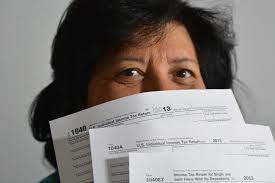 “A modern economy should work for all people, including those who want to live independently of spouses and partners.” –Center for American Progress
“A modern economy should work for all people, including those who want to live independently of spouses and partners.” –Center for American Progress
Single and cohabiting people, the Center for American Progress is our friend. In anticipation of the release of the latest unemployment data, the Center chose to focus on the employment situation of single people, aptly describing them as “an oft-overlooked demographic in economic policymaking.”
In their analyses, researchers Annie McGrew, Galen Hendricks, and Kate Bahn focused on three groups, all between the ages of 25 and 54: (1) married people; (2) people who are cohabiting; and (3) single people, defined as people who have always been single and are not cohabiting. (Divorced, widowed, and separated people were not included.)
Economic security: Single people have less of it
Before presenting any data, McGrew and her colleagues note that single people are less likely than married people to have economic security. Already I appreciate their enlightened approach, because in addition to mentioning the possible explanations so often acknowledged by others (such as the economies of scale – singles who live alone are paying for expenses on their own instead of splitting them), they also point to a very significant factor: “legal and social privileges accorded to married people – especially married men.” The authors did not spell out those privileges, but my colleagues and I have done so previously.
They also note that single people, on the average, are younger and have less wealth and less education than married people, so those factors add to their economic vulnerability, too. They add that single women, more so than single men, do more of the work of caring for others, sometimes at the expense of their own opportunities to earn income and accumulate wealth. They could have added that both single men and single women care for their aging parents more often than coupled men or women, and that’s true for both Blacks and Whites.
Unemployment: Single people have more of it
When McGrew and her colleagues examined unemployment rates by marital status and gender, they found that single men had the highest rates of unemployment (above 6%) and married men the lowest (below 3%).
Here is the rank-ordering of the six groups:
Single men, highest rate of unemployment
Single women
Cohabiting men
Cohabiting women
Married women
Married men, lowest rate of unemployment
The most dramatic findings, though, jumped out from the analyses that included race – White, Black, and Hispanic. (Only married and single people were included in these analyses.) The highest unemployment rate by far was for single Black men, at 10.4%. Single Black women had the next highest rate of unemployment, 8.9%. The lowest unemployment rate was for married White men, 1.9%.
Here are the 12 groups, listed by their rates of unemployment (%):
10.4, single Black men
8.9, single Black women
5.9, single Hispanic men
5.5, single White men
5.4, single Hispanic women
4.2, married Hispanic women
4.1, single White women
3.8, married Black men
3.8, married Black women
2.8, married Hispanic men
2.2, married White women
1.9, married White men
Notice that there is almost no overlap between the married and single groups. The five groups with the highest unemployment rates are all single, and the five groups with the lowest unemployment rates are all married.
Why is unemployment so much higher for single people than married people? Several kinds of explanations are possible. First, because single people are, on the average, younger and less educated, they may be less qualified for some jobs. Second, single people are more likely than married people to be caring for other people, including their parents and even people who are not their kin. These single people are working – it is just not the kind of work that comes with a regular paycheck. No matter how many hours they are putting in to provide the care that others need so badly, they still count as unemployed if they do not have a paying job.
A third possibility is that single people are targets of discrimination in the job market. In some studies of marital status differences (but not this one), statistical controls are included, such that only single and married people who are similar are compared. For example, analyses that “control for” age or education would compare single and married people of the same age, or the same level of education, so that any differences between the groups are more likely to be about marital status and not age or education. If single people are more likely to be unemployed than married people, even if they are the same age and have the same level of education, discrimination becomes a plausible explanation.
Studies of salary differences have included those kinds of controls, and the results are clear: Married men are paid more than single men, even when the single and married men are comparable in relevant ways such as their accomplishments and seniority.
Who is working? Big differences between married men and women, but not between single men and women
Married men are much more likely than married women to be in the labor force. From Figure 3 of the Center for American Progress article, the numbers appear to be about 93% for the married men and 73% for the married women.
There is hardly any difference for the single people. A shade over 80% of the single men are in the labor force, and a shade under 80% of the single women are.
There is some difference between the men and the women who are cohabiting, but not as big as the difference for the married people. About 90% of the cohabiting men are in the labor force, compared to about 80% for the cohabiting women.
In couples, whether married or cohabiting, one person is more likely to have the choice of not working for pay, because the other person could have a paycheck to cover expenses. Traditionally, the person who does not have the paying job is more often the woman, especially in married (rather than cohabiting) couples.
Another way to look at the differences in labor force participation is by gender. Among the women, the single women and cohabiting women are about equally likely to have a job, and both are more likely to be working for pay than the married women. Among the men, the married men are most likely to have a job and the single men the least likely.
The relevance of parenting (children under the age of 18) was examined only for the single and married women. That mattered for married women: married mothers were less likely to be in the labor force than married women with no children. For single women, though, parenting made no difference. Single mothers were just as likely to be working as single women with no children. Again, with just one income, single women have less of a choice. Perhaps there are also differences in valuing of paid work.
Working part-time: Married women do that more than any other group
In every relationship status group (married, cohabiting, single), the women are more likely to be working part-time than the men. The married women are more likely to be working part-time (about 25%) than any other group.
Part-time jobs are less likely to come with benefits, so they are risky. The authors note that part-time work puts married women “in a precarious position if their spouse loses a job or if a marriage is dissolved.” True enough. But single men and women who work part-time are in an even more precarious position: if they lose their job, they don’t have a spouse’s income to fall back on. And even if the single people are holding onto their part-time work, if they are living alone, their part-time income has to be stretched to cover the entire rent or mortgage, and all the utilities and other expenses.
So next time you hear rosy assessments of a booming economy…
Have you heard that the economy is doing well? Those kinds of claims are based on overall assessments. But measures such as unemployment rates that average across all segments of the population are glossing over significant differences among groups. The economic outlook may seem rosy for married people, but many single people – especially single Black people — are being left behind. That needs to change.
As McGrew, Hendricks, and Bahn concluded:
“Although the economy is doing well in the aggregate, policymakers should focus on the economy’s more disadvantaged workers when evaluating the health of the labor market. An individual’s economic security should not be dependent on their family status—instead the government should take steps to ensure that high-quality jobs with sustainable wages and policies that enable workers to manage work and family responsibilities are available to all Americans. Such steps will help ensure financial insecurity is not a barrier for couples who want to be married and that people who are single are not struggling to make ends meet simply because of their marital status.”
[Notes: (1) The opinions expressed here do not represent the official positions of Unmarried Equality. (2) The comment option on the UE website has been invaded by spammers, so I have disabled comments for now. I’ll post all these blog posts at the UE Facebook page; please join our discussions there. (3) For links to previous columns, click here.]
 About the Author: Bella DePaulo (PhD, Harvard), a long-time member of Unmarried Equality, is the author of Singled Out: How Singles Are Stereotyped, Stigmatized, and Ignored, and Still Live Happily Ever After and How We Live Now: Redefining Home and Family in the 21st Century, among other books. She writes the “Living Single” blog for Psychology Today and the “Single at Heart” blog for Psych Central. Visit her website at www.BellaDePaulo.com and take a look at her TEDx talk, “What no one ever told you about people who are single.”
About the Author: Bella DePaulo (PhD, Harvard), a long-time member of Unmarried Equality, is the author of Singled Out: How Singles Are Stereotyped, Stigmatized, and Ignored, and Still Live Happily Ever After and How We Live Now: Redefining Home and Family in the 21st Century, among other books. She writes the “Living Single” blog for Psychology Today and the “Single at Heart” blog for Psych Central. Visit her website at www.BellaDePaulo.com and take a look at her TEDx talk, “What no one ever told you about people who are single.”


